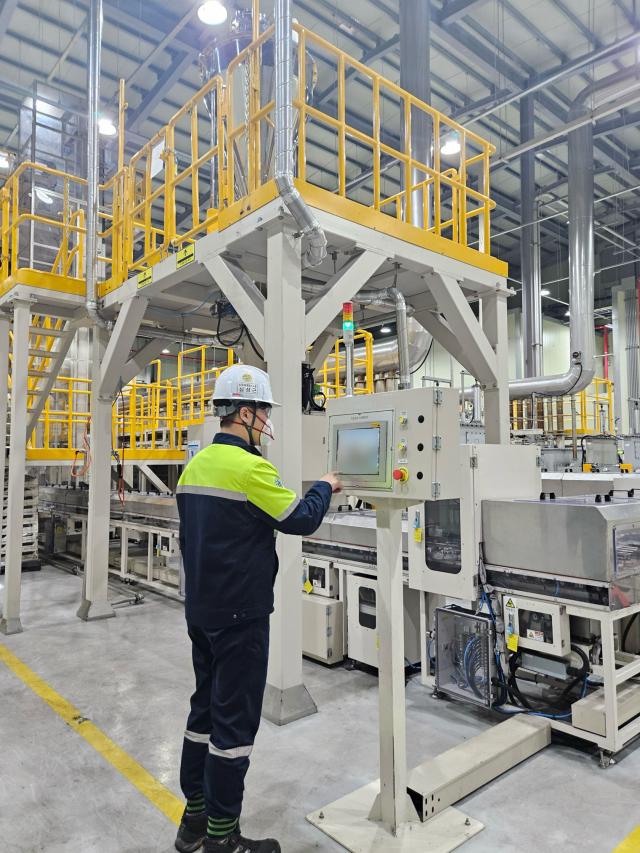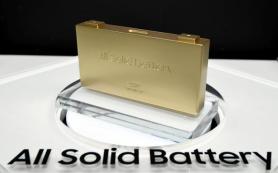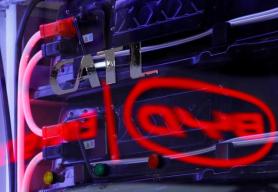
SEOUL, June 02 (AJP) - South Korea’s battery manufacturers are fast-tracking efforts to commercialize lithium manganese-rich (LMR) batteries, a next-generation chemistry that industry leaders see as a crucial middle ground between cost-efficiency and performance in electric vehicle (EV) technology.
The push marks a strategic pivot for an industry long dominated by two competing battery types: nickel-cobalt-manganese (NCM) batteries, prized for their high energy density but saddled with soaring material costs, and lithium iron phosphate (LFP) batteries, favored for affordability and safety yet constrained by lower energy output.
For years, South Korean companies such as LG Energy Solution and Samsung SDI have focused on high-nickel NCM and its aluminum-infused variant, NCMA, which supply premium EVs with extended range and rapid charging capabilities.
Meanwhile, Chinese manufacturers — led by CATL and BYD — have consolidated their lead in LFP technology, which now powers a significant portion of global EV fleets.
But as automakers face price volatility in raw materials and seek more diversified, geopolitically stable supply chains, Korean firms are charting a third path.
The LMR battery, which incorporates high levels of manganese — up to 65 percent — while minimizing or eliminating cobalt and significantly reducing nickel content, is emerging as a promising candidate.
"LMR technology allows us to maintain competitive energy performance while sharply lowering dependence on high-cost materials like cobalt," said an executive at LG Energy Solution, which holds more than 200 patents related to the chemistry.
Energy density has long defined battery competitiveness.
LFP batteries, while safe and inexpensive, generally offer about 160 watt-hours per kilogram (Wh/kg), limiting their appeal in range-sensitive vehicle segments. High-nickel NCM and NCMA cells can exceed 250 Wh/kg but come at a material premium, often relying on cobalt sourced from politically sensitive regions.
LMR batteries aim to occupy the middle ground, offering energy densities of roughly 210–220 Wh/kg — enough to support long-range EVs — while slashing reliance on cobalt entirely and reducing nickel content to around 35 percent, compared to the 85 percent in many current NCMA cells.
The concept is not new. Researchers first explored LMR chemistries in the 1990s, but early designs were plagued by technical hurdles: voltage fade, cathode degradation, and shortened cycle life. Recent advances in particle engineering, doping agents, and protective coatings have revived commercial interest.
General Motors, which has collaborated with LG Energy Solution through its Ultium Cells joint venture in the United States, has tested LMR battery prototypes across 1.4 million miles of simulated driving.
The company says the results show cycle life on par with today’s high-performance batteries. GM plans to adopt prismatic cell formats for its LMR packs, a shift that could streamline battery architecture and reduce component count by up to 50 percent.
LG Energy Solution is targeting 2028 for mass production, with early deployment expected in large-format vehicles such as the Chevrolet Silverado EV and Cadillac Escalade IQ — both projected to achieve more than 400 miles (644 kilometers) of range on a single charge.
Other Korean players are moving in parallel. POSCO Future M has completed pilot-scale production of LMR cathode materials at its Sejong R&D facility and aims to begin full commercial output by the end of 2025. The company plans to offer a product line tailored for both entry-level and premium EV platforms.
As global automakers recalibrate in response to tightening emissions rules, fluctuating commodity markets, and growing demand for energy security, South Korea’s battery industry appears to be embracing a dual-track strategy: maintaining high-nickel NCMA for luxury and high-performance segments, while positioning LMR as a flexible, lower-cost alternative that may help democratize long-range EVs.
If successful, the effort could challenge China’s dominance in affordable battery technologies — and reshape the global EV battery landscape.
Copyright ⓒ Aju Press All rights reserved.



